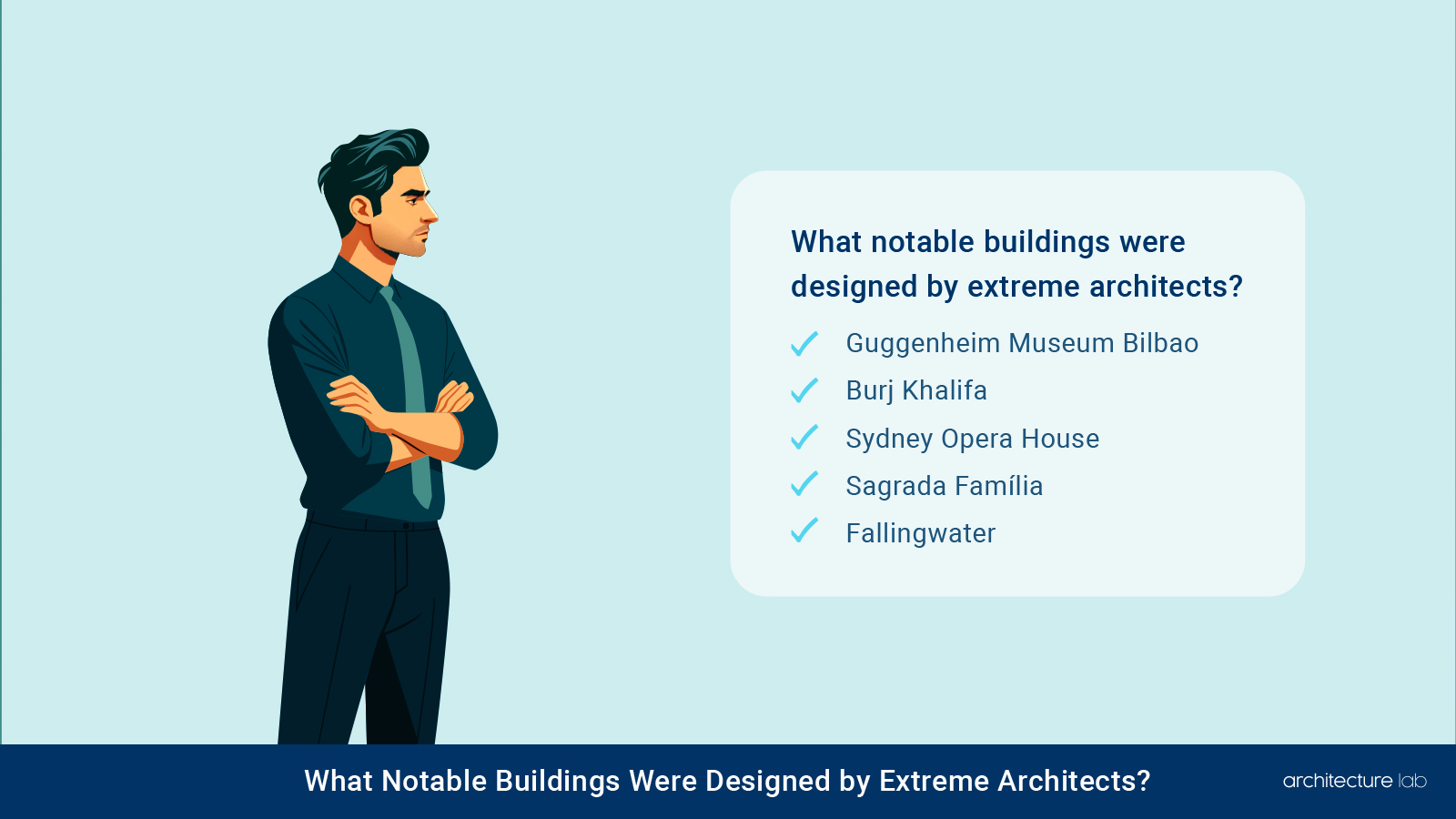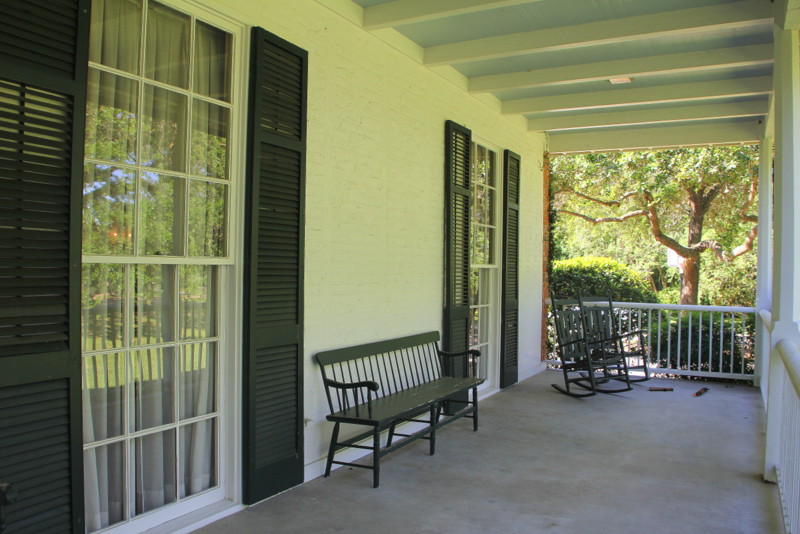
Extreme architects are professionals who push the boundaries of traditional design to create structures that withstand extreme conditions such as harsh climates, rugged terrains, and unconventional landscapes. They specialize in projects like high-altitude buildings, underwater structures, and space habitats. In terms of salaries, extreme architects are well-compensated for their unique skills and expertise. Extreme architects in the United States can earn $80,000 (€72,800, £69,600) per year, while in Europe, the salary for extreme architects is €65,000 ($70,850, £56,550) per year. Their specialized knowledge and ability to tackle unconventional projects make them highly sought after by prestigious architectural firms and government agencies. A strong educational foundation is essential to pursue a career as an extreme architect. Most professionals in this field hold a bachelor’s or master’s degree in architecture from an accredited institution. Specialized courses or certifications in structural engineering, environmental design, and materials science are advantageous. Ethics play a significant role in the work of extreme architects. They must prioritize safety, sustainability, and environmental considerations in their designs. Extreme architects adhere to strict codes and regulations to guarantee the well-being of occupants and the surrounding environment. They strive to balance innovation and responsibility, creating architectural marvels that push boundaries without compromising ethical principles.
What is an extreme architect?
An extreme architect is a professional specializing in designing and constructing buildings and structures that push the boundaries of conventional architecture. They create innovative, daring designs that challenge traditional norms and embrace unconventional materials and construction techniques. An extreme architect is known for their bold and adventurous approach, incorporating cantilevers, intricate geometries, and sustainable features. They strive to create functional yet visually striking spaces that evoke a sense of awe and wonder. Their services are sought by clients willing to invest in unique and boundary-pushing architectural experiences.
What are the responsibilities of an extreme architect?
The responsibilities of an extreme architect include designing and planning architectural projects that push the boundaries of conventional design, incorporating innovative and daring elements. They collaborate with clients to understand their needs and vision and develop unique, boundary-pushing concepts. They create detailed architectural drawings and models, ensuring the designs are structurally sound and meet building codes and regulations. Extreme architects also oversee the construction process, working closely with contractors and engineers to ensure the successful realization of their designs.
What type of buildings do extreme architects commonly design?
Extreme architects commonly design various buildings, including residential homes, commercial complexes, cultural institutions, and public spaces. They are often involved in projects that require unique and innovative designs, such as avant-garde museums, futuristic office buildings, cutting-edge research facilities, and eco-friendly structures. Extreme architects are sought after for their ability to create visually striking and unconventional spaces that challenge traditional architectural norms. They may also work on renovations and adaptive reuse projects, transforming existing structures into bold and contemporary spaces. The scale and complexity of the buildings designed by extreme architects may vary, ranging from small-scale renovations to large-scale developments with significant budgets.
What skills and knowledge do you need to be an extreme architect?
There are three major skills and knowledge needed to be an extreme architect. Firstly, to be an extreme architect, one needs a strong foundation in architectural design and technical expertise. They must deeply understand architectural principles, including spatial planning, building systems, and construction methods. It allows them to develop innovative and functional designs that can be effectively translated into built structures. Proficiency in architectural software and digital modeling tools is crucial for creating detailed and precise drawings and visualizations. Secondly, creativity and a strong sense of aesthetics are essential for an extreme architect. They must be able to think outside the box and envision unique and unconventional design solutions. Creativity allows them to push the boundaries of traditional architecture, incorporating daring elements and experimenting with new materials and forms. A strong sense of aesthetics helps them create visually striking and impactful spaces that captivate and inspire. Lastly, strong communication and collaboration skills are vital for an extreme architect. They must effectively communicate their design ideas and concepts to clients, engineers, contractors, and other stakeholders involved in the project. Collaboration skills enable them to work in multidisciplinary teams, coordinating with professionals from various fields to ensure the successful execution of their designs.
What types of architects are the most competitive?
The most competitive types of architects are green design architects and modern architects. Green design architecture is a type of architecture that focuses on creating eco-friendly and energy-efficient buildings that minimize the environmental impact and cost of construction and operation. These types of architects must have a deep knowledge of sustainable materials, technologies, and practices, a strong aesthetic sense, and a vision for the future. They must also comply with various regulations and standards promoting green building. Green design architecture is in high demand as more people and organizations are becoming aware of the importance of environmental conservation and social responsibility. In contrast, Modern architecture is characterized by the use of new materials, techniques, and forms that reflect the changes and challenges of the contemporary world. Modern architects must be innovative, experimental, adaptable, and responsive to their client’s and users’ needs and preferences. Their designs must also balance functionality, beauty, tradition, and novelty. Modern architecture is highly competitive as it requires constant learning and improvement and a keen sense of the trends and movements in the architectural field.
What is the salary of an extreme architect?
An extreme architect’s salary can vary depending on factors such as experience, location, and the scale of their projects. Extreme architects in the United States can earn $80,000 (€72,800, £69,600) per year. In Europe, the salary for extreme architects is €65,000 ($70,850, £56,550) per year.
Who are the most iconic extreme architects?

Listed below are the most iconic extreme architects:
- Zaha Hadid: Zaha Hadid was an iconic extreme architect known for her bold and futuristic designs. She was the first woman to receive the Pritzker Architecture Prize and has created iconic structures such as the Heydar Aliyev Center in Baku, Azerbaijan.
- Frank Gehry: Frank Gehry is well known for his unconventional and sculptural designs. His notable works include the Guggenheim Museum in Bilbao, Spain, and the Walt Disney Concert Hall in Los Angeles, California.
- Bjarke Ingels: Bjarke Ingels is known for his innovative and sustainable approach to architecture. His firm, BIG (Bjarke Ingels Group), has designed projects such as the Via 57 West in New York City and the Amager Bakke waste-to-energy plant in Copenhagen.
- Rem Koolhaas: Rem Koolhaas is a prominent figure in extreme architecture, known for his intellectual and conceptual approach to design. His notable works include the CCTV Headquarters in Beijing, China, and the Seattle Central Library in Seattle, Washington.
- Santiago Calatrava: Santiago Calatrava is recognized for his elegant and dynamic architectural designs. His works include the City of Arts and Sciences in Valencia, Spain, and the World Trade Center Transportation Hub in New York City.
What ethical principles should extreme architects respect?
Listed below are the ethical principles extreme architects should respect:
- Sustainability: Extreme architects should prioritize sustainable design practices that minimize environmental impact, promote energy efficiency, and utilize eco-friendly materials. It helps reduce carbon footprint and contribute to a more sustainable future.
- Social Responsibility: Extreme architects should consider the social impact of their designs, ensuring that they meet the needs of diverse communities and contribute positively to the well-being and quality of life of the users and surrounding neighborhoods.
- Accessibility: Extreme architects should prioritize inclusive design that ensures equal access and usability for people of all abilities, such as considerations for universal design principles, accommodating individuals with disabilities, and promoting inclusivity.
- Cultural Sensitivity: Extreme architects should respect and honor their communities’ cultural heritage, traditions, and context, which involves understanding and integrating local customs, aesthetics, and architectural vernacular to create designs that resonate with the place’s cultural identity.
- Ethical Business Practices: Extreme architects should uphold ethical business practices, including transparency, integrity, and accountability in their professional conduct, including fair treatment of clients, adherence to legal and regulatory requirements, and responsible handling of financial matters.
What notable buildings were designed by extreme architects?

Listed below are the notable buildings designed by extreme architects:
- Guggenheim Museum Bilbao: Designed by Frank Gehry, the Guggenheim Museum Bilbao in Spain is an iconic building known for its unique and sculptural form. It symbolizes Bilbao’s urban revitalization and is celebrated for using titanium panels and curvilinear shapes.
- Burj Khalifa: Designed by Skidmore, Owings & Merrill (SOM), the Burj Khalifa in Dubai, United Arab Emirates, is the world’s tallest building. Its soaring height, elegant design, and innovative engineering make it an architectural marvel and a global icon of modern architecture.
- Sydney Opera House: Designed by Jørn Utzon, the Sydney Opera House in Australia is known for its distinctive sail-like roof structure. It is a UNESCO World Heritage site celebrated for architectural expressionism, blending artistic vision with engineering ingenuity.
- Sagrada Família: Designed by Antoni Gaudí, the Sagrada Família in Barcelona, Spain, is a masterpiece of Catalan Modernism. Its intricate and organic design, characterized by soaring spires and detailed facades, showcases Gaudí’s unique architectural style and remains unfinished, making it an ongoing symbol of dedication and craftsmanship.
- Fallingwater: Designed by Frank Lloyd Wright, Fallingwater in Pennsylvania, United States, is an architectural marvel that seamlessly integrates with its natural surroundings. The house is built over a waterfall and is celebrated for its cantilevered design, harmoniously merging the built environment with the beauty of nature.
What new technologies are reshaping the work done by extreme architects today?
There are 4 major new technologies that are reshaping the work done by Restoration architects today. Firstly, Building Information Modeling (BIM) has emerged as a game-changer in extreme architecture. BIM allows architects to create digital representations of buildings, integrating various design elements and data into a single model. It enables real-time collaboration, clash detection, and accurate visualization, leading to more efficient design decisions and streamlined construction processes. Secondly, Virtual Reality (VR) and Augmented Reality (AR) have gained traction in extreme architecture, transforming how architects present and experience their designs. VR allows architects and clients to immerse themselves in virtual environments, providing a realistic sense of scale and spatial understanding. AR overlays digital information onto the physical world, allowing architects to visualize design proposals within existing contexts, enhancing communication and decision-making. Thirdly, Parametric design and computational tools are reshaping the design process for extreme architects. These tools leverage algorithms and mathematical models to generate complex geometric forms and optimize design solutions. Lastly, 3D printing and robotic fabrication advancements are revolutionizing the construction industry, offering extreme architects new possibilities for material exploration and construction techniques. 3D printing enables the creation of intricate and customized architectural elements with greater precision and efficiency. Robotic fabrication allows the construction of complex structures with robotic arms, enhancing the building’s speed, accuracy, and flexibility.
What software is most widely used by extreme architects today?
The software most widely used by extreme architects today is Autodesk’s AutoCAD. AutoCAD is a comprehensive computer-aided design (CAD) software that allows architects to create precise 2D and 3D drawings and models. It offers a wide range of drafting, modeling, and documentation tools, making it a versatile and powerful tool for architectural design. AutoCAD’s popularity stems from its robust functionality, industry compatibility, and extensive user base, which facilitates collaboration and interoperability between architects, engineers, and other professionals involved in the design process. AutoCAD’s continuous updates and support ensure that architects have access to the latest features and technologies, enabling them to stay at the forefront of architectural design practices.
Where can you study to be an extreme architect?
To become an extreme architect, individuals can pursue their studies at various universities and institutions worldwide. Famous institutions offering architecture programs include the Massachusetts Institute of Technology (MIT) in the United States, the Architectural Association School of Architecture (AA) in the United Kingdom, Delft University of Technology in the Netherlands, ETH Zurich in Switzerland, and the University of Sydney in Australia. These institutions provide comprehensive architecture programs that cover design principles, construction techniques, sustainability, and advanced technologies. Prospective students can choose from undergraduate and graduate programs that align with their career goals and aspirations as extreme architects.
Is a Master’s in Architecture degree enough to work as an extreme architect?
No, a Master’s in Architecture degree is not enough to work as an extreme architect. Extreme architects need specialized knowledge and skills in designing and developing buildings in extreme climates. They also need to be able to work on unique projects with highly problematic constraints and few or no previous architectural references. Extreme architects usually require additional training and certification in environmental engineering, sustainability, and disaster management.
Discover more from reviewer4you.com
Subscribe to get the latest posts to your email.





